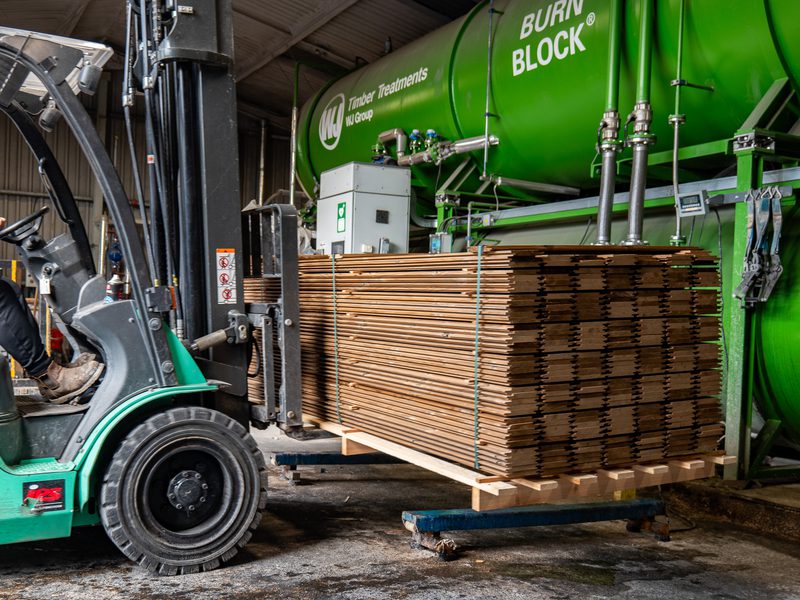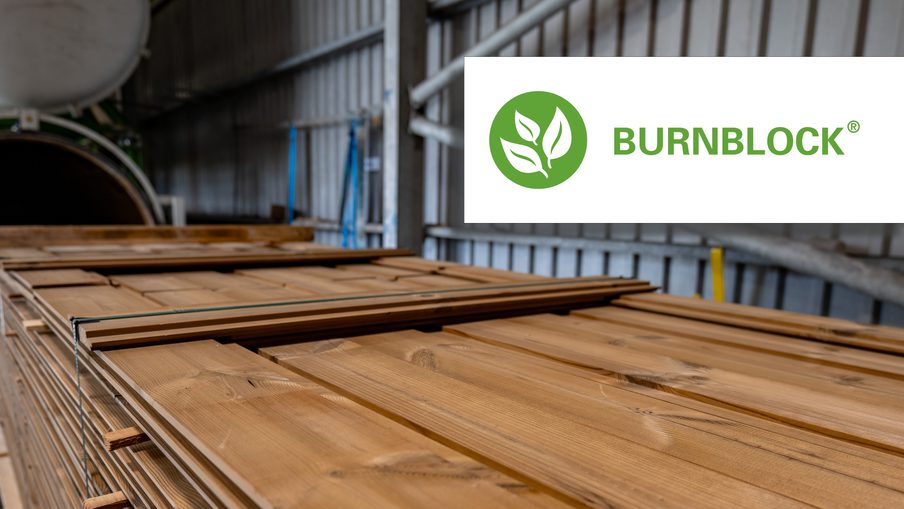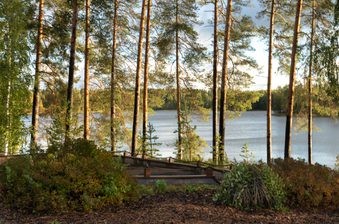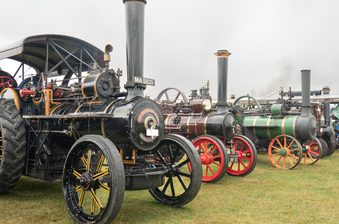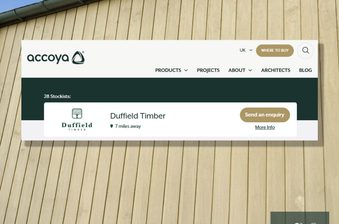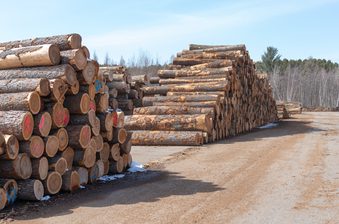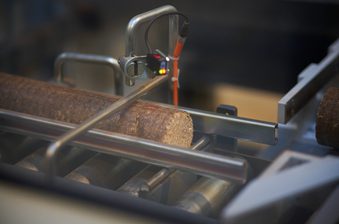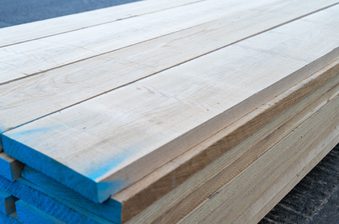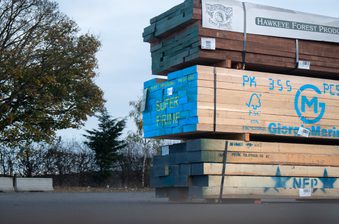Burnblock® – a natural fire retardant treatment for timber cladding – is the latest addition to our innovative range of timber cladding solutions.
When it comes to specifying a non-flammable cladding material, wood may seem like a counterintuitive choice. However, when treated appropriately, timber cladding does not pose a significant fire risk. Fire retardant treated timber cladding can attain a Euroclass fire safety rating of B, meaning it has a 'very limited contribution to fire'.
One such pioneering fire retardant treatment solution includes Burnblock®, the latest addition to our timber cladding range.
What is Burnblock® fire retardant treatment?
Burnblock® involves pressure impregnation of natural, non-toxic, fully biodegradable substances into the wood. This creates a surface on the timber that, once heated, chars and releases water, preventing oxygen reaching the wood. This reduces further combustion and minimises the fire’s spread.
Registered as a trademark in 2018, Burnblock® meets rigorous fire classification standards (including EN13501, which classifies building elements based on their reaction to fire). It provides scientifically proven protection without compromising on the natural beauty or material integrity of the wood.
Unlike many chemical-based treatments, Burnblock® contains no substances listed under REACH as Substances of Very High Concern (SVHC), making it a safe choice for people and planet alike.
The entire treatment process is independently audited each year by a notified body. This gives us full CE/UKCA and ISO 9001 certification, in turn giving customers confidence their timber has been treated to the highest possible standard.
Cladding and fire safety ratings
Understanding fire ratings is key when specifying timber cladding. The Euroclass system grades materials from A (non-flammable) to E (highly flammable). In its natural state, timber typically falls into Euroclass D. Euroclass A is reserved for non-combustible materials like steel and concrete.
For treated timber, Euroclass B is the highest rating realistically achievable. This means it is combustible, but with 'very limited contribution to fire'.
As well as contributing to fire spread, Euroclass has some additional classifications – smoke emission (‘s’) and flaming droplets (‘d’).
- Smoke emission: s1 (low smoke), s2 (medium smoke), s3 (high smoke)
- Flaming droplets: d0 (none), d1 (some), d2 (high)
An example classification of fire treated cladding is B, s1-d0 – meaning very limited contribution to fire, low smoke emission and no flaming droplets.
In another article, we've gone into more detail about fire safety ratings and rules for timber cladding.
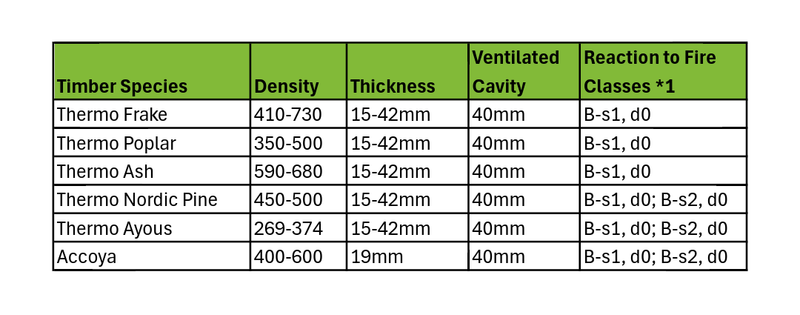
Duffield Timber: specialists in safe, sustainable treated timber cladding
Choosing the right timber cladding isn’t just about how it looks. It’s about choosing truly safe, sustainable and high-performance materials. Modern builders need to demonstrate and communicate the utmost care and responsibility to users and occupants.
At Duffield Timber, we help our customers build with confidence and showcase the safety and robustness of their projects.
Our range of fire retardant cladding options are available in high-quality, naturally-durable species like western red cedar, Thermo-Ayous, Thermo-Nordic pine, and Accoya® – ensuring performance and compliance.
Whether you're involved in a DIY, self-build or commercial project, we're here to help. Explore our timber cladding products, check out our case studies for inspiration and get in touch with our expert team to discuss your requirements.
